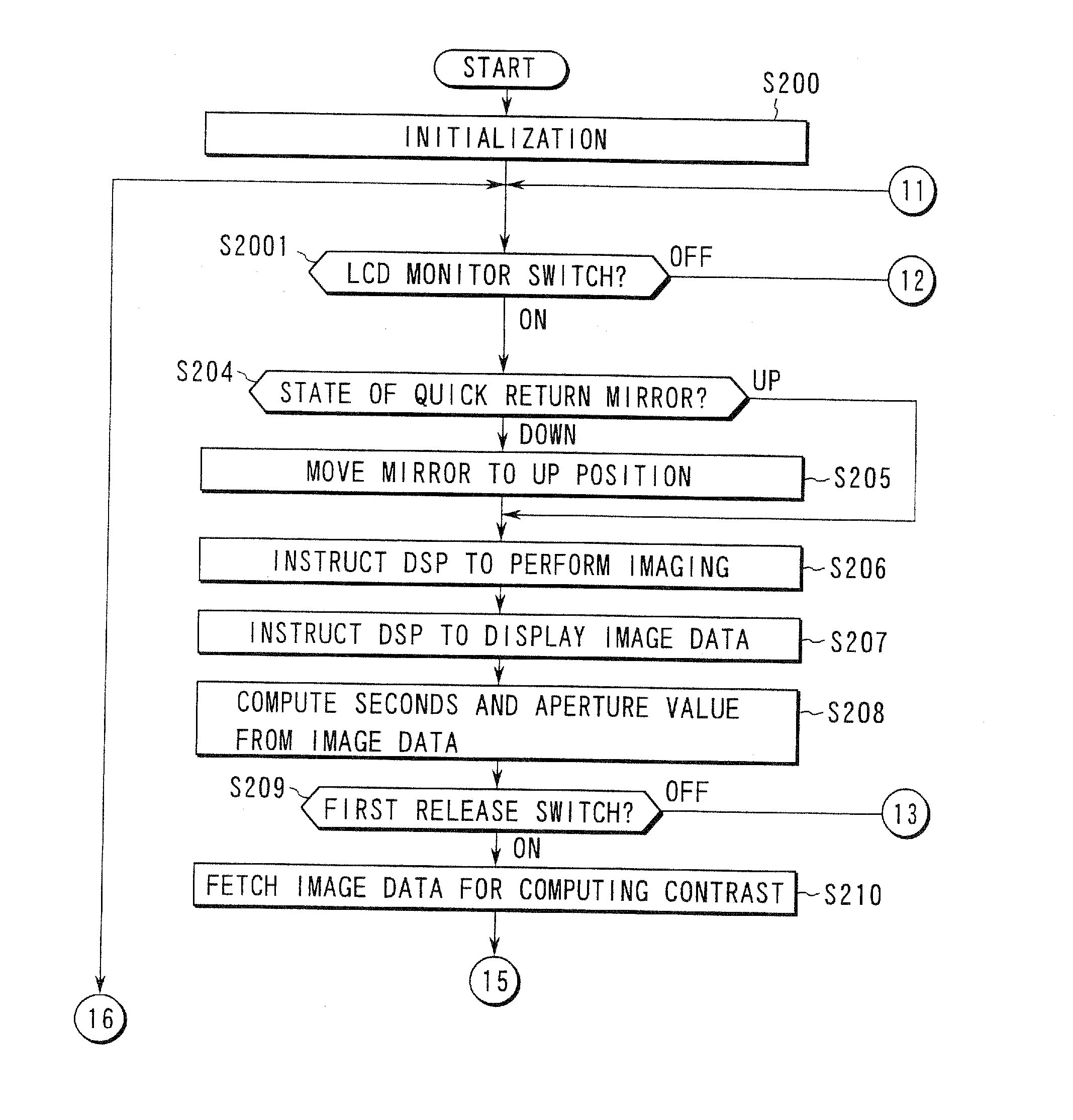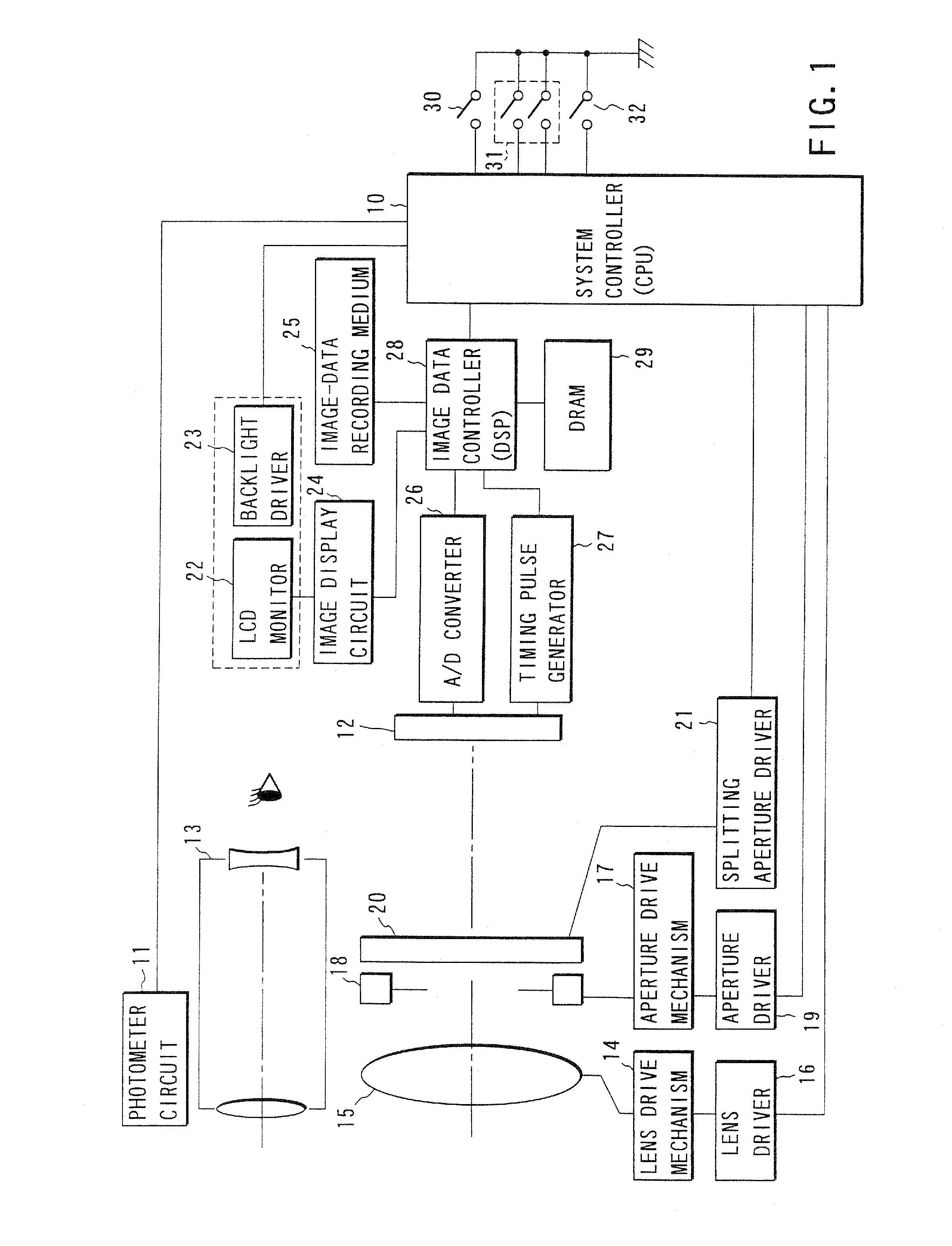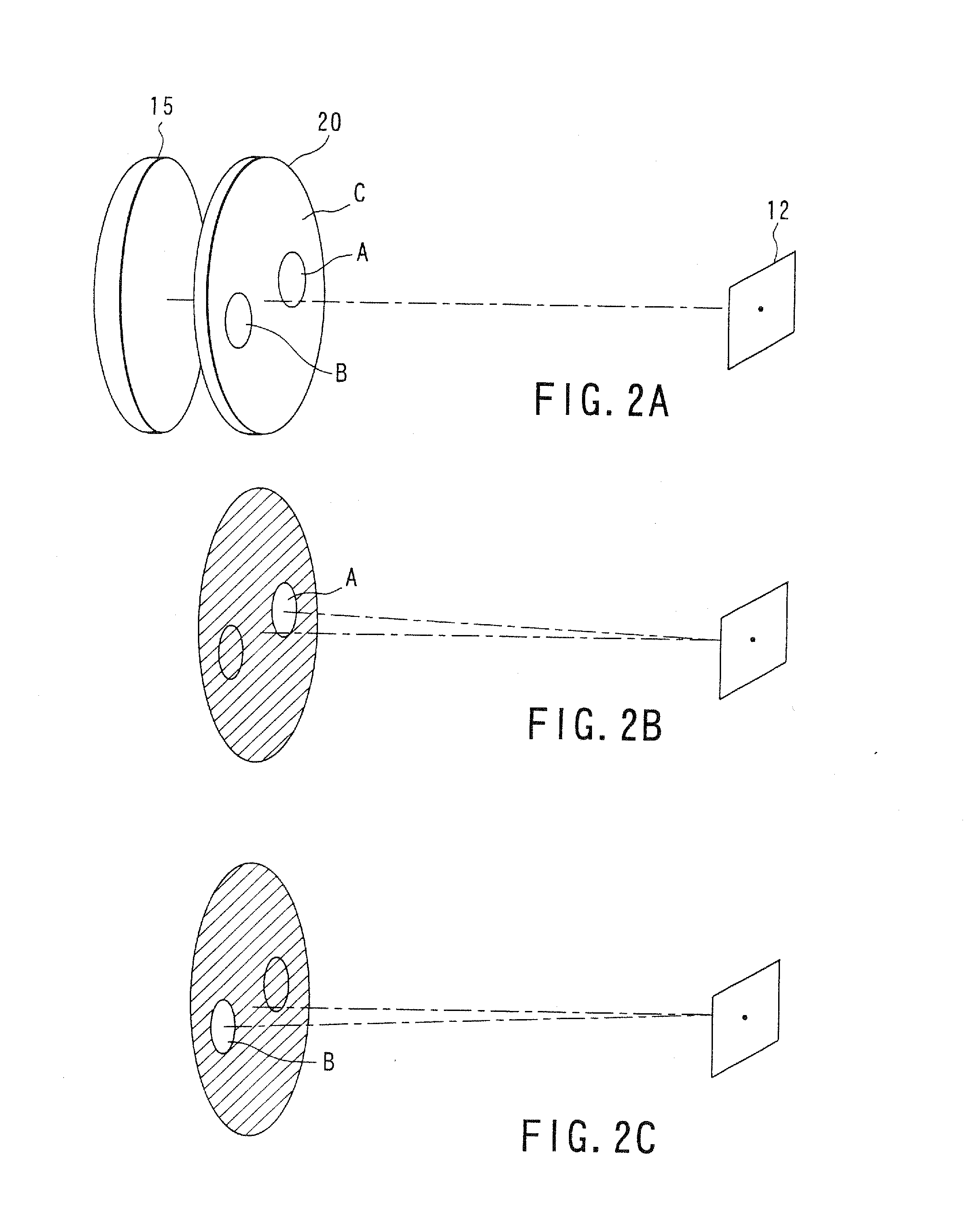Electronic still camera with capability to perform optimal focus detection according to selected mode
a technology of optimal focus detection and still camera, applied in the field of still camera, can solve the problems of slow operation, image obtained by other operations than imaging operations cannot be displayed on the lcd monitor,
- Summary
- Abstract
- Description
- Claims
- Application Information
AI Technical Summary
Problems solved by technology
Method used
Image
Examples
first embodiment
[0050]FIG. 1 is a block structural diagram of an electronic still camera according to a first embodiment of this invention.
[0051] A system controller (hereinafter called “CPU”) 10 performs the general control of the electronic still camera according to this embodiment. A photometer circuit 11 measures the luminance of a subject. The CPU 10 determines the set value of an aperture and the integration time of an imaging device (imaging section) 12 based on the luminance information from the photometer circuit 11. A finder 13 is used to check an imaging area. A lens drive mechanism 14 has an actuator such as a motor and converts the drive force of this actuator to the motion of an imaging lens 15 on the optical axis. Power is supplied to the actuator from a lens driver 16. The CPU 10 can arbitrarily set the position of the imaging lens 15 by controlling the lens driver 16. An aperture drive mechanism 17 has an actuator such as a step motor and drives blades which constitutes an apertur...
second embodiment
[0074]FIG. 6 is a block structural diagram of a camera according to the second embodiment of this invention. The electronic still camera according to the above-described first embodiment is equipped with the finder optical system and the imaging optical system independent of each other. According to the second embodiment, however, this invention is adapted to an electronic still camera of a single-lens reflex type. For the same components as those of the first embodiment, their descriptions will not be repeated.
[0075] When a quick return mirror 37 is down, the subject image is formed on a focusing screen 36 by the imaging lens 15. The image on the focusing screen 36 is guided to an eyepiece 38 via a pentaprism 35. A proximity sensor 39 is provided in the vicinity of the eyepiece 38. The proximity sensor 39, for which, for example, a photo reflector or the like can be used, detects if the user's eye is close to the eyepiece 38 (if the user is optically seeing the subject). The outpu...
third embodiment
[0089]FIGS. 9A, 9B and 9C are flowcharts for explaining the operation of the CPU 10 according to the third embodiment of this invention. This flow is characterized by removing the proximity sensor for detecting if the finder is in use and the LCD-monitor position detecting switch and providing an LCD monitor switch 100 as shown in FIG. 10 instead.
[0090] The following will discuss only what differs from the flowcharts in FIGS. 8A, 8B and 8C. After initialization is carried out in step S200, the flow goes to step S2001 to determine if the LCD monitor switch 100 is on. If the LCD monitor switch 100 is on, the status of the quick return mirror is then determined in step S204. If the quick return mirror is at the down position, the mirror is driven to the up position and a through screen is displayed on the LCD monitor (step S205). In macro photographing, the user can take a picture while viewing the subject on the LCD monitor in this state. If it is determined in step S2001 that the LC...
PUM
 Login to View More
Login to View More Abstract
Description
Claims
Application Information
 Login to View More
Login to View More - R&D
- Intellectual Property
- Life Sciences
- Materials
- Tech Scout
- Unparalleled Data Quality
- Higher Quality Content
- 60% Fewer Hallucinations
Browse by: Latest US Patents, China's latest patents, Technical Efficacy Thesaurus, Application Domain, Technology Topic, Popular Technical Reports.
© 2025 PatSnap. All rights reserved.Legal|Privacy policy|Modern Slavery Act Transparency Statement|Sitemap|About US| Contact US: help@patsnap.com



